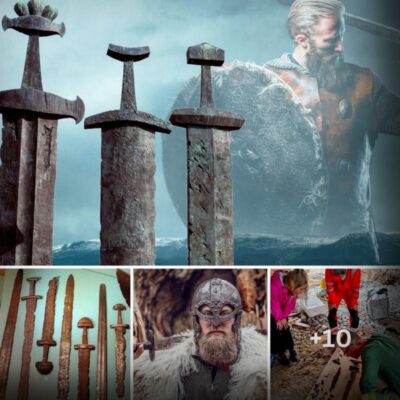The giant otter or giant river otter[3] (Pteronura brasiliensis) is a South American carnivorous mammal. It is the longest member of the weasel family, Mustelidae, a globally successful group of predators, reaching up to 1.7 metres (5.6 ft). Atypical of mustelids, the giant otter is a social species, with family groups typically supporting three to eight members.

The groups are centered on a dominant breeding pair and are extremely cohesive and cooperative. Although generally peaceful, the species is territorial, and aggression has been observed between groups.

The giant otter is diurnal, being active exclusively during daylight hours. It is the noisiest otter species, and distinct vocalizations have been documented that indicate alarm, aggression, and reassurance.

Its distribution has been greatly reduced and is now discontinuous. Decades of poaching for its velvety pelt, peaking in the 1950s and 1960s, considerably diminished population numbers. The species was listed as endangered in 1999 and wild population estimates are typically below 5,000. The Guianas are one of the last real strongholds for the species, which also enjoys modest numbers – and significant protection – in the Peruvian Amazonian basin. It is one of the most endangered mammal species in the Neotropics. Habitat degradation and loss is the greatest current threat. The giant otter is also rare in captivity; in 2003, only 60 animals were being held.[4]

The giant otter shows a variety of adaptations suitable to an amphibious lifestyle, including exceptionally dense fur, a wing-like tail, and webbed feet. The species prefers freshwater rivers and streams, which are usually seasonally flooded, and may also take to freshwater lakes and springs. It constructs extensive campsites close to feeding areas, clearing large amounts of vegetation. The giant otter subsists almost exclusively on a diet of fish, particularly characins and catfish, but may also eat crabs, turtles, snakes and small caimans.[2] It has no serious natural predators other than humans, although it must compete with other predators, such as the neotropical otter, jaguar, and various crocodilian species, for food resources.

Otters are voracious predators, close to being apex [top predator] in most places where they live.

So anywhere they overlap with gators this would be a pretty common occurrence. Still, this is impressive:

That’s not a small alligator, probably three or four years old and five feet [1.5 meters] long. If that’s a male otter it might be 30 pounds. That’s a very bold animal!

How does the otter know to bite the gator behind the head?

It’s actually a learned behavior. That otter has probably tried attacking smaller ones and got some bites to learn from.

Remember that crocs swing their heads side to side when they fight, so the otter wants to be entirely out of the reptile’s strike zone. Mounted on the gator’s back with teeth into the neck, that’s a smart strategy.

How does the otter actually kill the gator?

It doesn’t, not directly. First, that’s a pretty hard animal to bite through. The armor on the back is made to deflect bites from other alligators, so it’s very tough.

Where the otter wins is in energy: The otter has sustainable energy, whereas the gator is like a grenade, with explosive energy that doesn’t last long.

So the best tactic is to wear the gator out, which only takes a few minutes of thrashing and rolling around.

So the best tactic is to wear the gator out, which only takes a few minutes of thrashing and rolling around.
Quite quickly it will be very tired, its muscles filled with lactic acid and no longer functioning.

At that point it’s almost like it’s intoxicated, and the otter can then get it up on shore. The gator dies of lactic acid buildup, not from being eaten. It would take a long time to kill it that way.

So the otter eats its prey alive? Yeah, once on shore it will rip off pieces of the hide—otters have very sharp teeth—to get to the guts and meat, the good stuff, inside.

A lot of parts will end up scattered around. It’s like a lion’s kill as opposed to a snake’s. If there’s a mated pair or young otters, they’ll get a piece of it, too. It’s a good education for otter pups.

What other big animals might an otter eat? Whatever they can catch and overpower. They are smart, agile, and strong predators.

They do eat a lot of amphibians and fish, but they’ll also take out sizeable beavers, raccoons, plus snapping turtles, snakes, and small gators. Of course, gators can also eat otters, so it goes both ways!

And what else might go for a gator? When they’re hatchlings, everything eats them. Large fish, snapping turtles, bird of prey. Bobcats and panthers and black bears can certainly eat young ones.

But once the gators are good-sized, the only predator that will typically beat one is another gator. And, apparently, an otter if it’s hungry enough!











I appreciate you taking the time to read this post from Ideassimple. I hope you learn a lot about nature. Please leave a comment or share our article if you think it insightful and interesting. Thank you very much!











